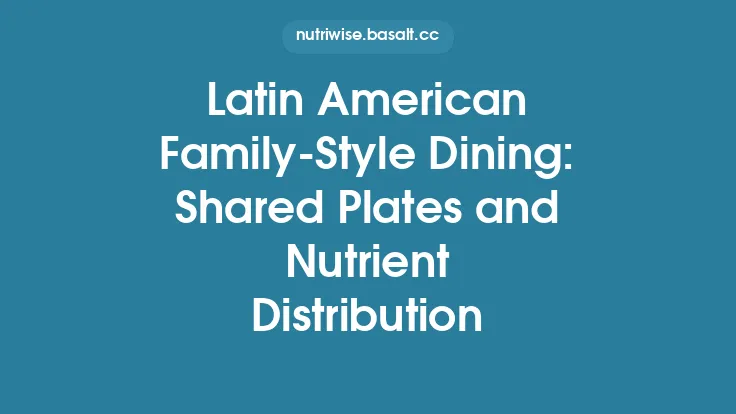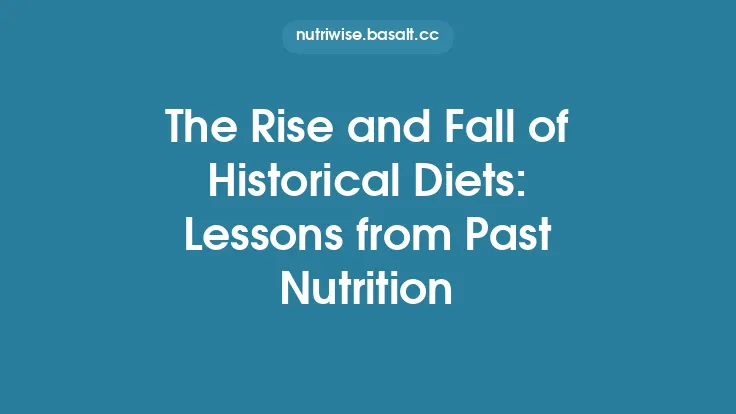Latin American culinary traditions are built upon a foundation that stretches back millennia, long before the arrival of European influences. The everyday meals of the region are anchored by three pillars—beans, corn, and an abundance of fresh produce—that together create a diet both nutritionally robust and culturally resonant. From the highlands of the Andes to the low‑lying coastal plains of Central America, these ingredients have been cultivated, processed, and celebrated in countless ways, reflecting the diversity of climates, indigenous peoples, and historical trajectories that define Latin America today.
Historical Roots and Cultural Significance
The domestication of maize (Zea mays) in the Balsas River valley of present‑day Mexico around 9,000 years ago marks the beginning of a food system that would spread throughout the continent. Parallel to maize, several species of Phaseolus (common beans) were domesticated in the Andean and Mesoamerican regions, establishing a complementary grain‑legume pairing that supplies a complete amino‑acid profile when consumed together.
These crops are more than sustenance; they are woven into myth, ritual, and identity. In many indigenous cosmologies, corn is a sacred gift from the gods, symbolized in creation myths such as the Maya Popol Vuh, where humans are fashioned from maize dough. Beans, often referred to as “the poor man’s meat,” have historically provided essential protein for peasant communities and are celebrated in festivals like Brazil’s “Festa do Feijão.” Fresh produce—ranging from tropical fruits to high‑altitude tubers—has likewise been integral to seasonal celebrations, market days, and communal feasts.
Core Staples: Corn (Maize) and Its Variants
Corn’s versatility stems from its ability to be processed into multiple forms, each with distinct culinary applications and nutritional attributes:
| Form | Traditional Name(s) | Typical Uses | Nutrient Highlights |
|---|---|---|---|
| Whole kernels (fresh) | Elote, choclo | Grilled, boiled, salads | Carbohydrates, fiber, B‑vitamins, lutein |
| Nixtamalized dough | Masa, masa harina | Tortillas, tamales, pupusas | Enhanced calcium, niacin bioavailability |
| Dried kernels | Hominy, pozole kernels | Soups, stews | Resistant starch, minerals (Mg, P) |
| Fermented beverage | Chicha, tepache | Refreshing drinks | Probiotic microbes, modest vitamins |
Nixtamalization—a process of soaking and cooking corn in an alkaline solution (traditionally calcium hydroxide)—is a cornerstone of Latin American food technology. This alkaline treatment not only improves dough elasticity but also liberates bound niacin (vitamin B3), preventing pellagra in populations that rely heavily on corn. Moreover, the calcium absorbed during nixtamalization contributes to bone health, a benefit often overlooked in modern dietary assessments.
Legumes: Beans Across the Region
Beans are cultivated in a remarkable array of varieties, each adapted to specific microclimates:
- Black beans (frijol negro) – Predominant in the Caribbean and parts of Brazil; rich in anthocyanins.
- Pinto beans (frijol pinto) – Common in Mexico and the Andean foothills; high in soluble fiber.
- Red kidney beans (frijol rojo) – Staple in Colombian and Venezuelan cuisine; notable for iron content.
- Lima beans (habas) – Grown in high‑altitude zones of Peru and Bolivia; source of folate.
When cooked with the “soaking and discarding water” method, beans lose a portion of oligosaccharides that cause gastrointestinal discomfort, while retaining most of their protein, fiber, and micronutrients. A typical serving (≈½ cup cooked) provides 7–9 g of protein, 6–8 g of dietary fiber, and significant amounts of folate, potassium, and magnesium.
Fresh Produce: Fruits, Vegetables, and Herbs
The tropical and subtropical belts of Latin America yield a cornucopia of fresh produce that complements the grain‑legume base:
- Leafy greens: *espinaca (spinach), acelga (Swiss chard), quelites* (wild amaranth) – high in vitamin K, iron, and carotenoids.
- Root vegetables: *yuca (cassava), *ñame* (yam), papa* (potato) – provide complex carbohydrates and resistant starch.
- Fruits: *papaya, mango, guava, maracuyá* (passion fruit) – abundant in vitamin C, polyphenols, and dietary fiber.
- Herbs and aromatics: *cilantro, culantro, epazote, ají* (chili peppers) – contribute bioactive compounds such as capsaicin and flavonoids with anti‑inflammatory properties.
Seasonality dictates market availability, encouraging a diet that naturally cycles through a variety of micronutrients throughout the year. Traditional preservation methods—sun‑drying, pickling, and fermenting—extend the shelf life of produce while enhancing its nutritional profile (e.g., increased probiotic content in fermented *curtido*).
Traditional Preparation Techniques
- Stewing (Guisado) – Beans, corn, and vegetables are simmered together with aromatics, creating a nutrient‑dense broth where water‑soluble vitamins are retained.
- Grilling (Asado) – Corn on the cob is often grilled over charcoal, imparting smoky flavor and modestly increasing antioxidant activity through Maillard reactions.
- Fermentation – Products like *chicha (maize) and tepache* (pineapple) undergo natural lactic acid fermentation, producing beneficial bacteria that aid gut health.
- Masa‑based baking – Tortillas and tamales are cooked on a *comal or steamed in pachamanca* pits, preserving the integrity of the nixtamalized corn’s nutrients.
These methods are low‑energy and rely on locally available tools, reinforcing the sustainability of the diet.
Nutritional Profile and Health Implications
When examined as a whole, the traditional Latin American diet delivers a balanced macronutrient distribution:
- Carbohydrates: 55–65 % of total energy, primarily from complex sources (corn, tubers, legumes) with low glycemic indices when minimally processed.
- Protein: 12–15 % of total energy, supplied chiefly by beans and, in coastal areas, modest amounts of fish or poultry.
- Fat: 20–30 % of total energy, contributed by avocado, nuts (e.g., *cajú*), and occasional use of vegetable oils (e.g., *aceite de oliva* in the Southern Cone).
Micronutrient density is high, especially for folate, magnesium, potassium, vitamin C, and carotenoids. Epidemiological data from rural cohorts indicate lower prevalence of hypertension and type 2 diabetes compared with urbanized populations that have shifted toward processed foods. The high fiber content (≈25 g/day) supports favorable gut microbiota composition, while the presence of phytochemicals (e.g., anthocyanins in black beans, capsaicin in chilies) contributes anti‑oxidative and anti‑inflammatory effects.
Seasonal and Regional Diversity
- Mesoamerica (Mexico, Guatemala, Belize) – Emphasizes corn tortillas, black beans, and a wide array of chilies; dishes like *pozole and tamales* showcase nixtamalized corn.
- Andean Highlands (Peru, Bolivia, Ecuador) – Features quinoa and amaranth alongside corn and beans; tubers such as *oca and papa* dominate.
- Caribbean Basin (Cuba, Dominican Republic, Puerto Rico) – Incorporates plantains, yucca, and tropical fruits; beans are often stewed with pork (*habichuelas con carne*).
- Southern Cone (Argentina, Chile, Uruguay) – While beef is prominent, corn and beans remain staple side dishes; fresh produce includes *choclo (large-kernel corn) and pimentón* (sweet peppers).
These variations illustrate how geography shapes the proportion and preparation of the three core pillars, yet the underlying reliance on beans, corn, and fresh produce remains constant.
Socioeconomic and Environmental Aspects
Smallholder farms dominate bean and corn production across Latin America, employing agroecological practices such as intercropping (e.g., the “milpa” system where corn, beans, and squash grow together). This polyculture:
- Enhances soil nitrogen through bean fixation, reducing the need for synthetic fertilizers.
- Provides pest suppression via biodiversity, lowering pesticide usage.
- Improves resilience to climate variability, as each crop matures at different times.
Economically, beans and corn are among the most affordable protein and carbohydrate sources for low‑income families, contributing to food security. Moreover, the reliance on locally sourced fresh produce minimizes transportation emissions, aligning the diet with contemporary sustainability goals.
Contemporary Adaptations and Preservation Efforts
Urbanization and global food markets have introduced processed snacks and refined grains, challenging the traditional pattern. Nevertheless, several initiatives aim to revitalize heritage foods:
- Culinary education programs in schools teach students to prepare *tortillas and frijoles* from scratch.
- Certification schemes (e.g., “Denominación de Origen” for specific corn varieties) protect genetic diversity and incentivize farmers.
- Community gardens in cities grow *quelites* and heirloom beans, reconnecting urban dwellers with seasonal produce.
These efforts help maintain the nutritional integrity of the diet while allowing for modern conveniences (e.g., ready‑to‑cook bean packets that retain fiber and protein).
Practical Guidance for Incorporating Latin American Staples
- Start with a base of nixtamalized corn – Purchase masa harina to make tortillas, pupusas, or arepas. The process preserves calcium and niacin.
- Add a variety of beans – Rotate black, pinto, and red beans throughout the week; soak overnight and cook with aromatics like onion, garlic, and bay leaf.
- Load up on fresh produce – Include at least two colors of vegetables per meal; sauté *quelites with a dash of ají* for flavor and antioxidants.
- Embrace traditional cooking methods – Use a *comal* or cast‑iron skillet for grilling corn; simmer stews slowly to maximize nutrient extraction.
- Mind portion balance – A classic plate might consist of a small corn tortilla, a generous serving of beans, and a larger portion of vegetables, mirroring the traditional 1:1:2 ratio (grain:legume:produce).
By following these simple steps, anyone can experience the healthful, flavorful essence of Latin American traditional diets without needing extensive culinary expertise.
Closing Thoughts
The enduring partnership of beans, corn, and fresh produce forms the nutritional backbone of Latin America’s culinary heritage. Rooted in centuries‑old agricultural practices, enriched by cultural rituals, and supported by a robust nutrient profile, this dietary pattern offers a model of balanced, sustainable eating. While modern pressures have introduced new challenges, the resilience of these staple foods—bolstered by community initiatives and a growing appreciation for heritage cuisine—ensures that the flavors and health benefits of Latin American traditional diets will continue to nourish both body and spirit for generations to come.





